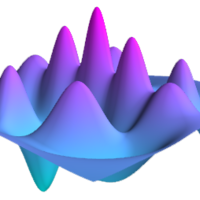Make your code count: Quantum simulations and collaborative code development
Introduction to QuTiP: the quantum toolbox in Python
- Track: Quantum Computing devroom
- Room: AW1.121
- Day: Saturday
- Start: 14:25
- End: 15:10

Open source tools such as QuTiP - The Quantum Toolbox in Python are playing a big part in facilitating research in quantum technologies in both academia and the industry. Such tools provide the users with the software resources to model, simulate and study various quantum effects easily. QuTiP goes beyond the simulation of quantum circuits and facilitates the simulation of the physics of quantum devices. In this talk, I will take the example of some new developments in QuTiP to show the ease with which one simulate open quantum systems as well as contribute to the development of such software tools. We will discuss various parts of collaborative code development using Git, and possible optimizations of calculations. The talk will be an end-to-end discussion of how to collaborate, develop and distribute your own open-source tools for the study of quantum systems.
A major challenge to developing quantum computing is modeling the quantum systems themselves which are used to build quantum devices - superconducting circuits, ion traps, spin qubits, photonics. In addition to simulating quantum circuits and algorithms, simulating quantum physics itself is a challenging task and if we are to harness the power of quantum computing, we need to model quantum systems better and study the interactions of a quantum system with the environment and the effect of noise.
QuTiP allows the user to simulate several quantum phenomena and study the effects of noise on an open quantum system. The open-source nature allows anyone to add and contribute code which makes it an excellent place to showcase new simulation techniques and quantum effects emerging from a research project. This also enables reproducibility and it can accelerate further study and research without the need to spend weeks reproducing previous results.
I will introduce QuTiP and discuss several examples on how to use the tool. The examples will range from generating topological circuit descriptions from arbitrary quantum circuits to simulations of spin ensembles to simulating spin-boson models with strong and ultrastrong coupling.
- Introduction
- Open source projects for quantum computing and quantum simulations - a brief discussion on python based tools.
- Beyond quantum circuits: simulating quantum physics with QuTiP.
- Examples and latest additions to QuTiP
- Contributing your own code to open source projects.
- Conclusions
Speakers
| Shahnawaz Ahmed |